Melvin Seals & JGB at Aggie Theatre on…
645 views
Article Contributed by DJ Morty Coyle
Published on November 21, 2025

David Byrne | Los Angeles, CA | November 20th, 2025 – photos by Stevo Rood
While an otherwise gloomy, rain-soaked night bewildered the Hollywood traffic outside, the rapidly filling Dolby Theatre felt charged with a bright, electric optimism. Everyone seemed to share the same question: what sort of musical experiment would David Byrne — former Talking Heads frontman, sonic explorer, and relentless creative tinkerer — unveil tonight?
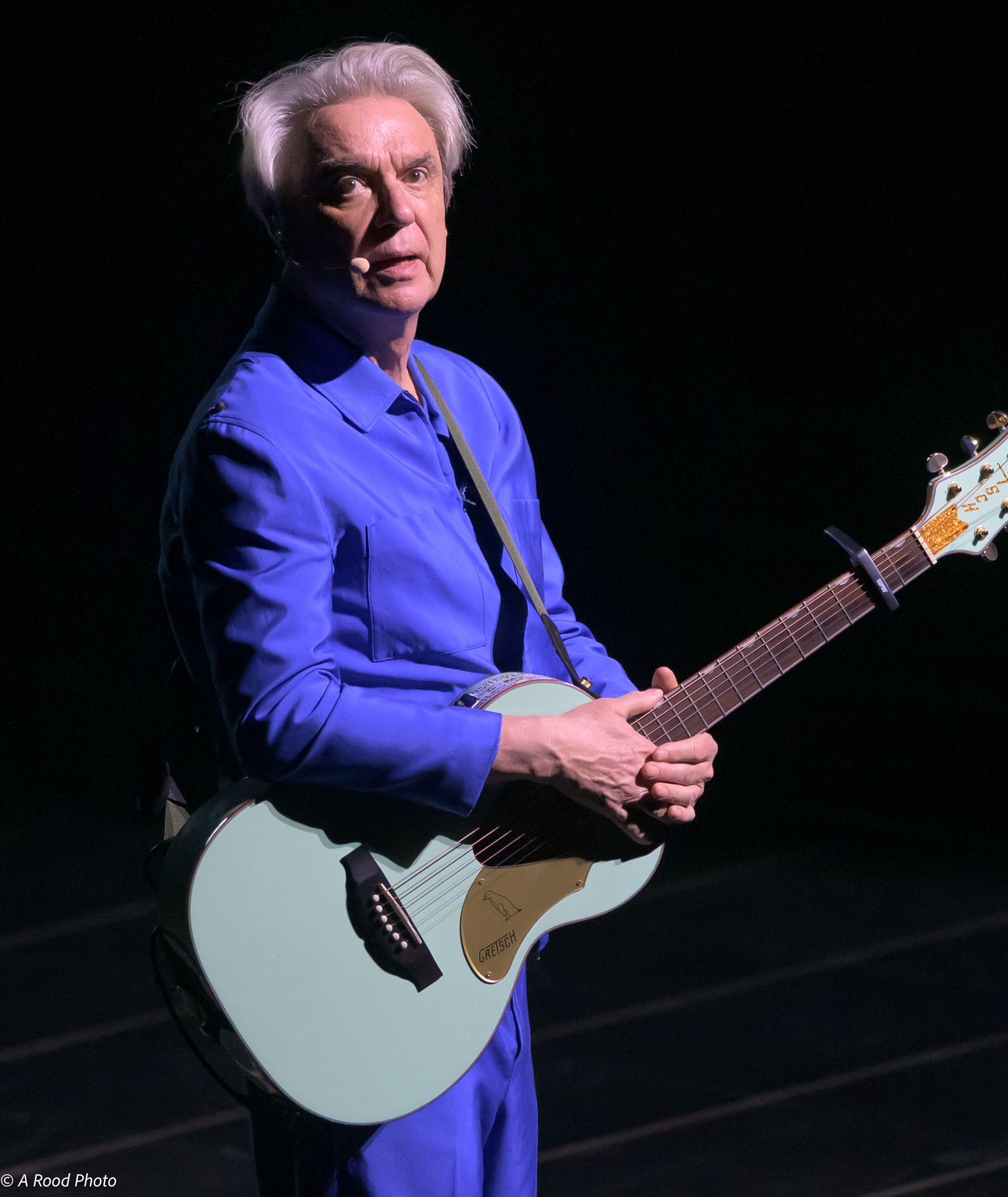
His acclaimed production American Utopia, Byrne’s 2019 Broadway debut (later captured by Spike Lee for the 2020 film), had already set a high bar with its mobile musicians, minimalist choreography, and deeply human staging. That show felt like the natural, grown-up evolution of the brilliantly oddball energy Jonathan Demme immortalized in 1984’s genre-defining concert film Stop Making Sense. Tonight promised something just as inventive — maybe more.

As we waited, a mountain of crimson curtain concealed the evening’s mysteries while a pre-show ambient soundscape of birds — cooing, chirping, clucking, tweeting — filled the room. It was a strangely perfect touch, reminding us how much of Byrne’s most compelling work (solo or with Talking Heads) plays in the liminal zone between nature and modernity — the tension between concrete jungles and ancestral yearning, between the digital hum and some long-lost pastoral dream he’s still trying to decode.
When the lights finally dimmed and the curtain rose, one thing became immediately clear: tonight was going to deliver on every ounce of hype.
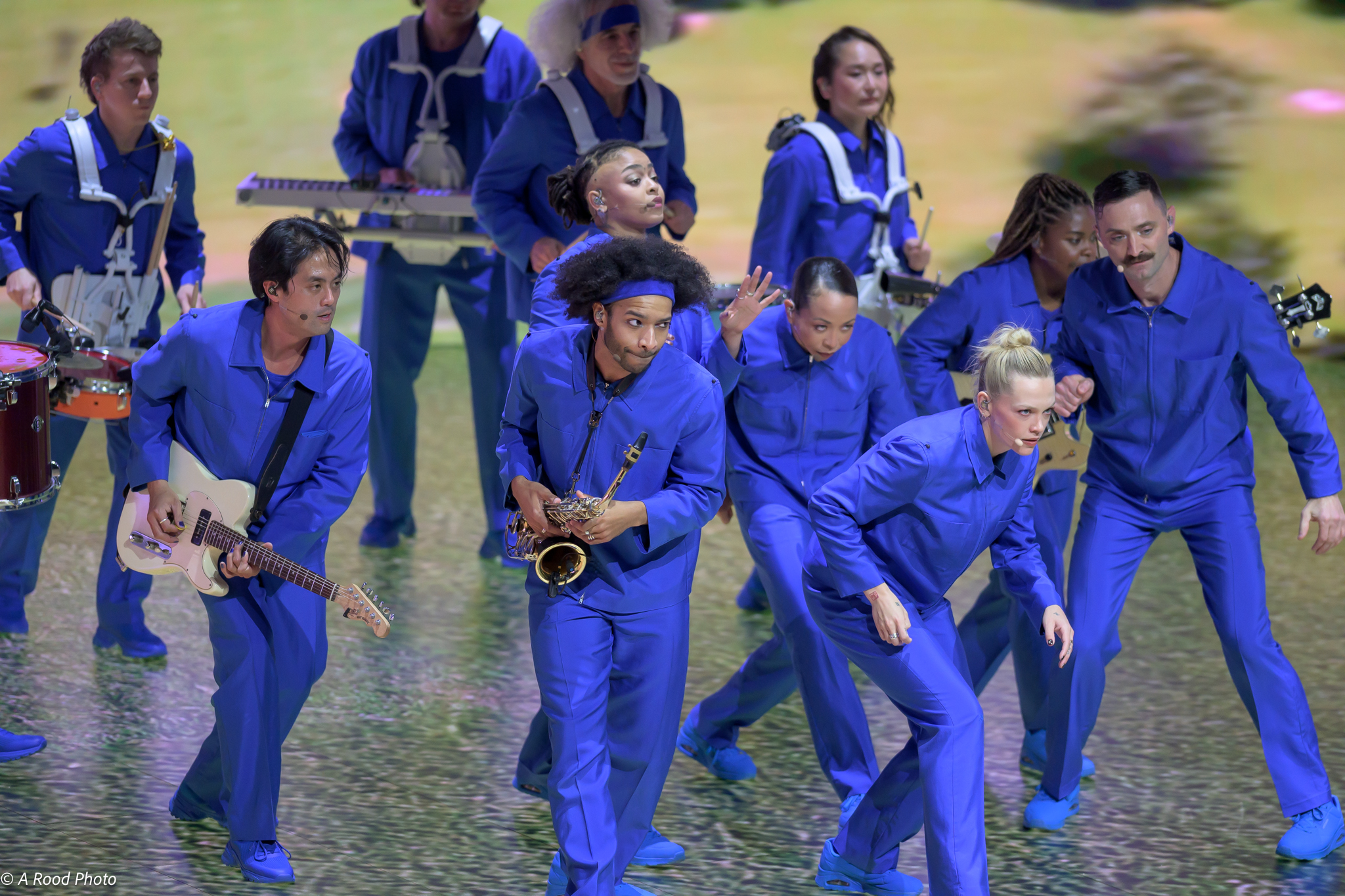
Byrne appeared flanked — sometimes by a single performer, other times by the full complement of his twelve multi-ethnic, multi-racial, international, mixed-gender musician/dancer/vocalists — with arrangements shifting song by song. A surprise thirteenth guest, comedian and musician Fred Armisen, popped in for one number that had the crowd roaring. Each of the evening’s twenty-one songs unfolded like its own theatrical vignette.

The performers, all unencumbered by cables, carried their instruments or wore headset mics as they wove intricate choreography across the stage. Despite the constant motion, the sound remained remarkably crisp — alive, dynamic, and never once drifting into the dreaded “too perfect” zone of pre-recording. Byrne’s voice sounded wonderfully vibrant and expressive, and his wit, humor, and unexpected heartfelt moments of audience banter showed an artist still deeply curious — and deeply engaged — after nearly fifty years.
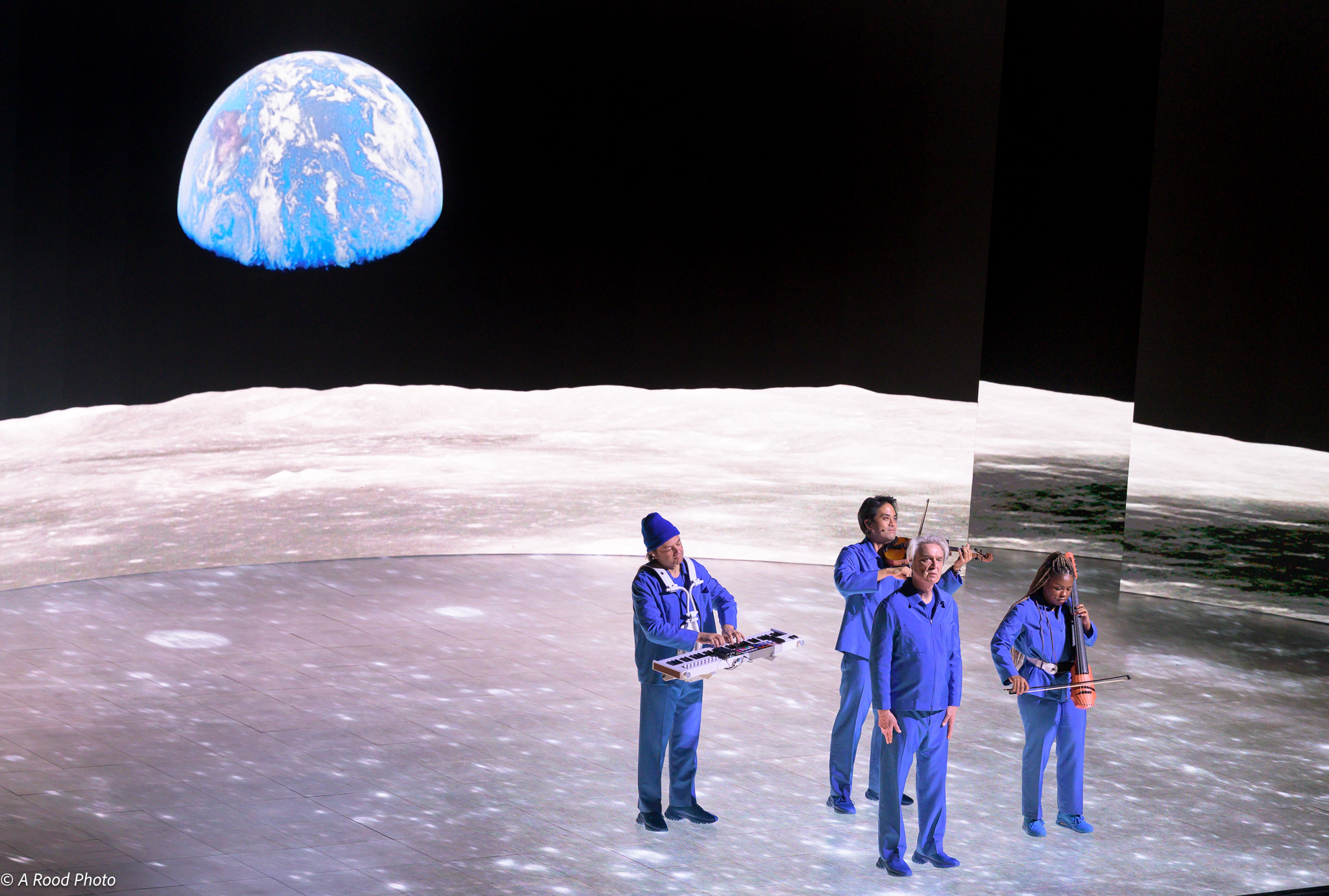
The visual production was no less breathtaking. Hyper-vivid projections transformed the stage into a desolate moon overlooking a rising Earth; pulsating patterns synced to percussion; an enormous panorama of Byrne’s New York high-rise; and other surreal or emotional landscapes shaped by each song. One of the night’s most affecting sequences came during Talking Heads’ 1979 dystopian classic “Life During Wartime,” when footage of clashes between ICE/military agents and protestors carrying flags rippled across the stage — a sharp intake of breath moment for the Los Angeles crowd.
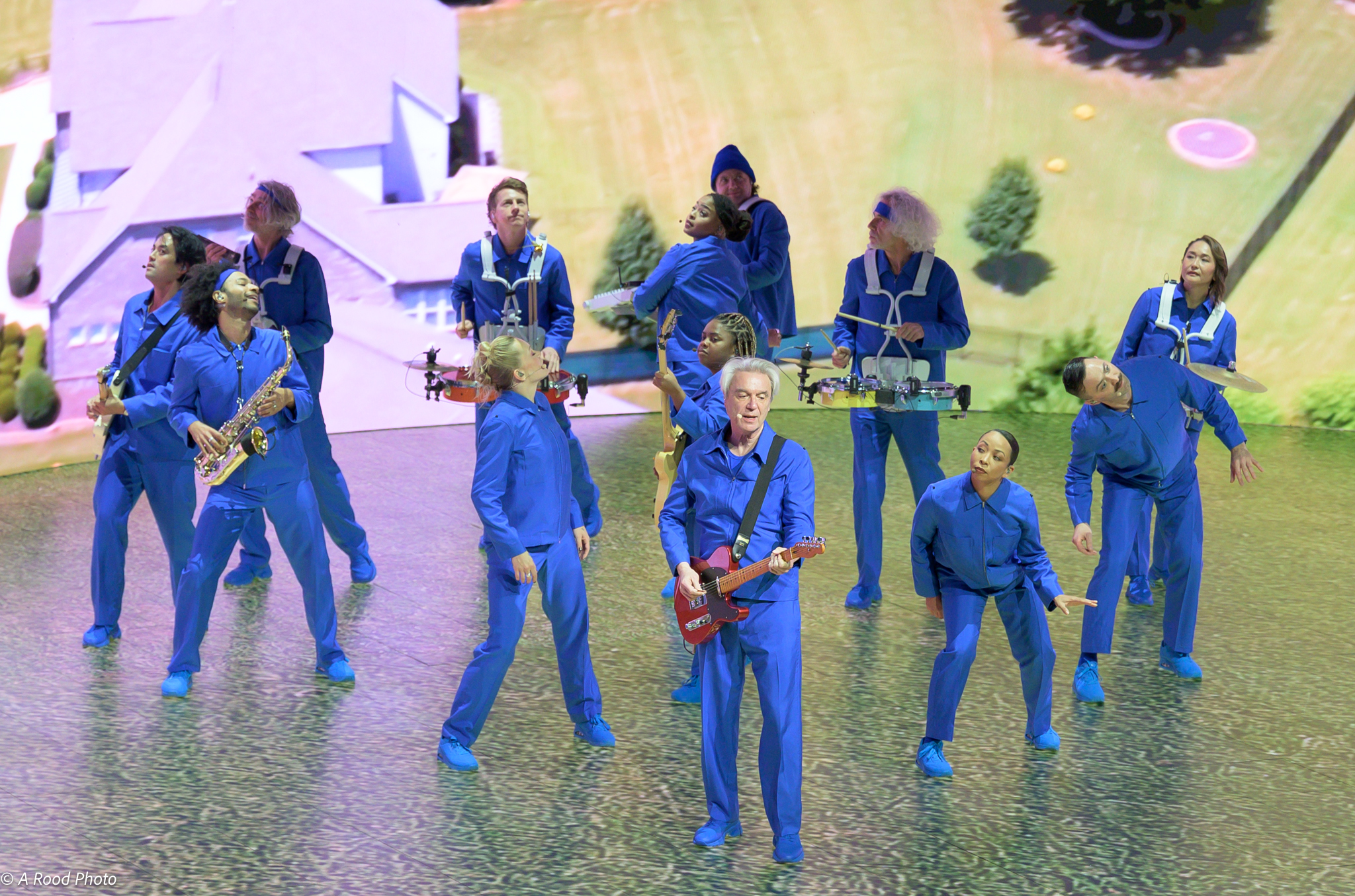
Across more than an hour of selections spanning Byrne’s nearly half-century career — including highlights from his terrific new album Who Is the Sky?, deep-cut solo favorites, a Brian Eno collaboration, and beloved Talking Heads staples — the show built toward an ecstatic closing run of bona fide hits.
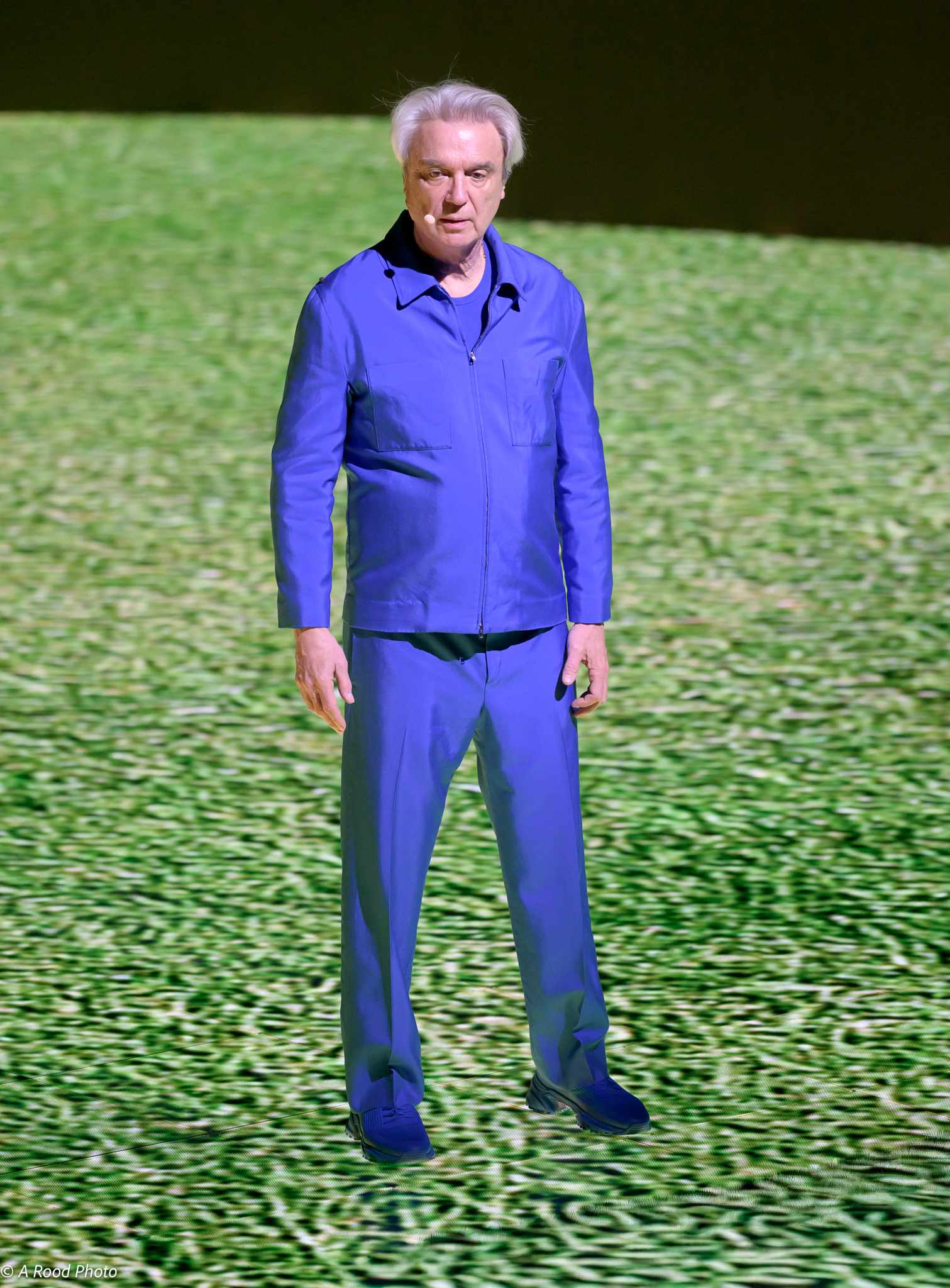
The entire venue seemed to bounce as everyone sang along to “Psycho Killer,” “Burning Down the House,” and “Once in a Lifetime,” just as Byrne had jokingly encouraged in his quirky pre-show announcement. Yes, there was dancing in the aisles — joyful, respectful, unstoppable dancing.
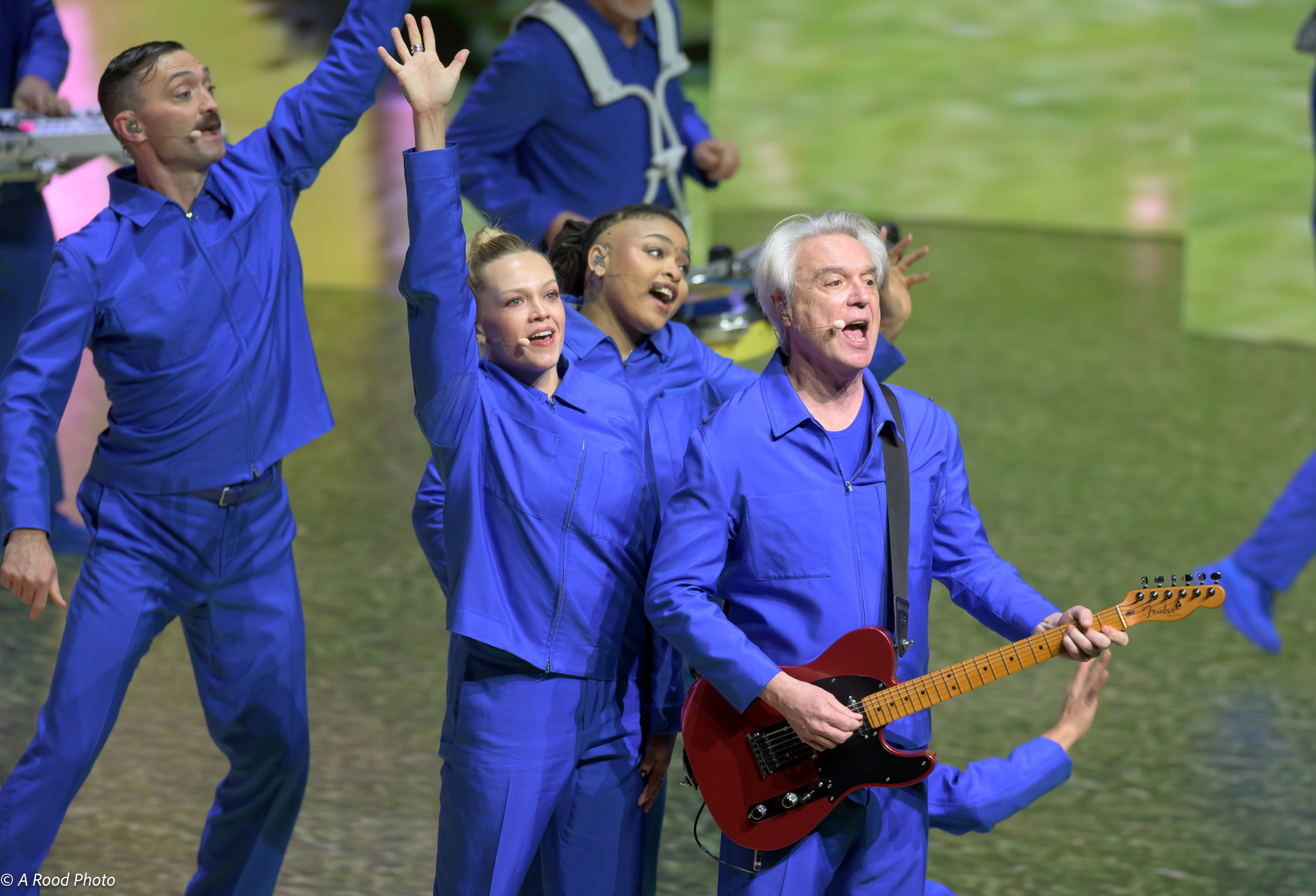
In the end, it was a masterfully joyful, overwhelmingly engaging, surprisingly intimate, and wildly entertaining night at the theatre. David Byrne didn’t just remind us why he remains a singular creative force; he reminded us why live music — real, inventive, risk-taking live music — still matters.
No other posts from DJ Morty Coyle.